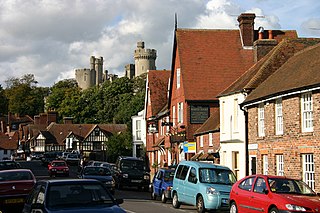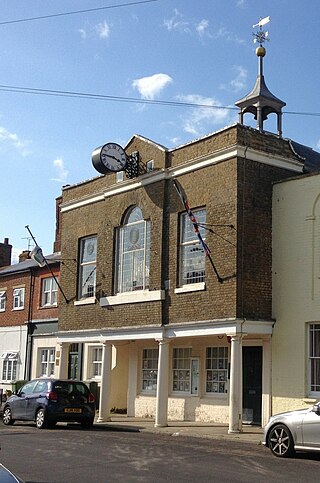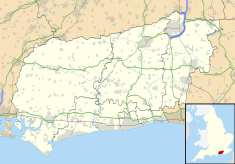
Arundel is a market town and civil parish in the Arun District of the South Downs, West Sussex, England.

Arun is a local government district in West Sussex, England. Its council is based in Littlehampton. The district's other towns are Arundel and Bognor Regis. The district is named after the River Arun, which runs through the centre of the district. Parts of the district fall within the South Downs National Park.

Edward William Fitzalan-Howard, 18th Duke of Norfolk,, styled Earl of Arundel between 1975 and 2002, is a British peer who holds the hereditary office of Earl Marshal and, as Duke of Norfolk, is the most senior peer in the peerage of England. He is also the titular head of the House of Howard.

Henry Miles Fitzalan-Howard, Earl of Arundel, styled as Lord Maltravers until 2002 and known professionally as Henry Arundel, is a British aristocrat, businessman and former motor racing driver. He is heir apparent to the dukedom of Norfolk, the most senior peerage in the peerage of England, and the family seat of Arundel Castle.

Hartlepool Borough Hall is municipal building, which served as the meeting place of the old Hartlepool Borough Council, before it amalgamated with West Hartlepool County Borough Council. It is located on the Headland, Hartlepool in County Durham, England and is a Grade II listed building.

Middlewich Town Hall, also known as Victoria Buildings, is a municipal structure in Lewin Street, Middlewich, Cheshire, England. The building, which was originally commissioned as a technical school and public library, is now the meeting place of Middlewich Town Council.

Wareham Town Hall is a municipal building in East Street, Wareham, Dorset, England. The town hall, which is the meeting place of Wareham Town Council, also hosts the Wareham Town Museum.

Chipping Campden Town Hall is a municipal building in the High Street, Chipping Campden, Gloucestershire, England. The building, which is the meeting place of Chipping Campden Town Council, is a Grade II* listed building.

The Old Town Hall is a building on Church Street in the market town of Poulton-le-Fylde in Lancashire, England. The building, which is located just beyond the northern end of Market Place, started life as a public house before becoming a municipal building and then reverting to use as a public house.

Stockbridge Town Hall is a municipal building in the High Street in Stockbridge, Hampshire, England. The structure, which is used as the meeting place of Stockbridge Parish Council, is a Grade II* listed building.

Ledbury Market Hall, also known as Ledbury Town Hall, is a municipal building in the High Street in Ledbury, Herefordshire, England. The structure, which is used as an events venue, is a Grade I listed building.

Queenborough Guildhall is a former municipal building in the High Street in Queenborough, Kent, England. The structure, which is currently used as a museum, is a Grade II listed building.

Tenterden Town Hall is a municipal building in the High Street in Tenterden, Kent, England. The structure, which is the meeting place of Tenterden Town Council, is a Grade II listed building.

Garstang Town Hall is a municipal building in the High Street in Garstang, Lancashire, England. The structure, which currently accommodates two shops and a Royal British Legion Club, is a Grade II listed building.

The Moot Hall is a municipal building in Market Cross Place in Aldeburgh, Suffolk, England. The building, which is the meeting place of Aldeburgh Town Council, is a Grade I listed building.

The Old Town Hall is a municipal building in The High Street in Steyning, West Sussex, England. The building, which was used as a courthouse and a public events venue, is a Grade II listed building.

The Old Town Hall is a municipal building in Old Market Street, Usk, Monmouthshire, Wales. The structure, used as the local club of the Royal British Legion, is a Grade II listed building.

Hoyland Town Hall is a former municipal building in Hoyland, a town in South Yorkshire in England. The town hall, which was previously the offices and meeting place of Hoyland Urban District Council, is currently in residential use.

Bodmin Guildhall is a historic building in Fore Street in Bodmin, a town in Cornwall, in England. The structure, which was used for municipal purposes before being converted for use as a baker's shop and restaurant, is a Grade II listed building.




















